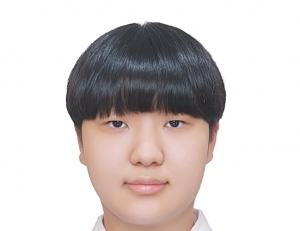“COVID-19,” which has spread throughout China and around the world since its first outbreak in Wuhan, China in December 2019, has not disappeared to this day. Korea also could not avoid this virus. The first confirmed case in Korea was reported on February 19, 2020, and the virus has not completely disappeared. As a result of the government’s actions, a “social distancing” system has been put in place. However, there have been people who do not abide by the system, which is meant to protect the public. The Pharos wants to find out what the system is and whether there is any punishment for those who fail to abide by it.
-Social distancing
“Social distancing” is a government recommendation that has been implemented to prevent infection in the community as the number of COVID-19 confirmed cases has soared. These include refraining from participating in events and meetings where many people gather, refraining from going out, and expanding telecommuting. Starting on June 28,2020, various “distancing” names were unified into “social distancing” and were divided into 1 to 3 stages according to the severity of the COVID-19 epidemic and the intensity of quarantine measures. Since then, the second phase of social distancing in Seoul, Gyeonggi Province, and Incheon was applied starting midnight on August 19, and the second stage of social distance was expanded nationwide starting midnight on August 23. The government has decided to mainta in the second phase of social distancing control in the Seoul metropolitan area for another week, originally scheduled to end on Aug. 30. From Aug. 30 to Sept. 24, restaurants and cafés were restricted with regard to operating hours, and social distancing was further strengthened beyond the second stage. However, as the situation got better, the government announced that they would adjust social distancing in the Seoul metropolitan area again to stage two for two weeks (September 14-27) starting on September 13, 2020. However, the government said that the holiday period, which includes Hangul Proclamation Day and Chuseok, is expected to be the biggest obstacle to the COVID-19 quarantine in the second half of the year. They said it will set a special quarantine period for two weeks starting Sept. 28 and prepare strong quarantine measures nationwide in advance. Currently, the second phase of social distancing is being carried out between the metropolitan area which is dealing with high rates of infection and the non-capital area with relatively lower rates. Asa result, there is a slight difference from the stage two regulations that were originally enforced. The difference is shown in the table above.
“Social Distance in Daily Life” is the lowest stage, which refers to a situation in which a balance is maintained between the spread and relaxation at a level that the medical system can handle. Stage 2 refers to the stage where the average medical system goes beyond what is acceptable and the COVID-19 epidemic continues to spread in the community. Stage 3 refers to a large-scale pandemic in which COVID-19 is rapidly spreading as a large number of group infections occur in the community. Each phase classification will be judged comprehensively by assessing the risk level of various indicators. When switching from stage 1 to stage 2, the government must ensure that the patient’s medical system is occurring at a manageable level. The transition from stage 2 to stage 3 focuses on the rapid spread of infection on a large scale. Reference indicators for assessing risk include the daily number of confirmed cases (centered to community patients), the rate of unknown infection routes, the status of group outbreaks under management, and the ratio of management within the quarantine network. In addition, the characteristics, social costs, and expert opinions of the epidemic, such as the capacity of intensive care units, capacity of the medical system, and distribution of high-risk facilities and population, are also considered. The scope of each stage is, in principle, a nationwide implementation. However, if the degree of prevalence varies greatly by region, the Central Disaster Relief Center and the relevant local governments will consult to differentiate them by region. In principle, the application period for each stage shall be two to four weeks, but may be adjusted in consideration of the rate of infections. The Central Disaster Relief Center said on July 17, 2020that it has prepared a standard that can be referred to when adjusting the social distance level in each region. According to the report, the government will be able to adjust the distance level by region based on the judgment of the mayors, governors, and local leaders. In adjusting the steps, the status of the confirmed population versus the population by region and the extent to which the infection spreads are both considered. The risk assessment and step adjustment of the area are carried out by region. There are seven areas in the Seoul metropolitan area (Seoul, Gyeonggi, Incheon), Chungcheong (Daejeon, Sejong, Chungbuk, Chungnam), Honam (Gwangju, Jeonnam, Jeonbuk), Gyeongbuk (Daegu, Gyeongbuk province), Gyeongnam (Busan, Ulsan, Gyeongnam province), Gangwon and Jeju. In addition, if the average number of confirmed cases per week exceeds the standard set by region, the level can be upgraded to level two for one week by considering the index of reproducing infections. In addition, the average number of confirmed cases per week (domestic occurrence) by region was set at 40 in the Seoul metropolitan area, 25 in Gyeongnam, 20 in Chungcheong, Honam and Kyeongbuk, and 10 in Gangwon and Jeju.
-Right to indemnity
Due to the COVID-19 crisis, many people have sacrificed their freedom for the majority rather than for the individual and are making great efforts to abide by the government-announced quarantine rules. This caused the number of COVID-19 confirmed patients to slow down for a while in the summer, but it has been on the rise again since the Gwanghwamun rally in Seoul in mid-August. The causes of this explosion are various. Among them, however, are the failure to comply with the government-announced quarantine rules, and this reckless behavior without following government-recommended procedures when COVID-19 was confirmed has raised many people’s eyebrows. Currently, the government is paying for the treatment when COVID-19 is confirmed in a patient. However, some argue that it is unfair for the state to pay for the treatment, even for those who have not followed the government-recommended procedures. The government has also recently expressed its opinion that such people will be burdened with medical expenses by reviewing claims for indemnity. So what is the right to indemnity and how can the state exercise it? The right to indemnity refers to the right of a person who has reimbursed his or her debt instead to claim a refund from the debtor on behalf of the creditor. In state litigation, the state first pays compensation to those who are affected by illegal activities and then claims compensation against those responsible for the actual illegal activities. In other words, it is the right to repay the money to the creditor instead of the debtor and to claim the money to the debtor. The National Health Insurance Corporation said it plans to seek compensation for medical expenses incurred in relation to the recent violation of quarantine guidelines. In other words, the National Health Insurance Corporation pays most of the cost of treating COVID-19. Compared to the definition above, the National Health Insurance Corporation is the person who reimbursed the debt instead. Public medical institutions, designated hospitals and health centers that treat patients with confirmed patients receive medical expenses from the National Health Insurance Corporation. With regard to the definition, they are the creditor. Namely, the National Health Insurance Corporation pays the patient’s cost of treatment. Also, by definition, the National Health Insurance Corporation can charge the confirmed patients for the cost of treatment. However, COVID-19 is an infectious disease which has affected the entire nation. Therefore, the National Health Insurance Corporation doesn’t have the right to indemnity regarding confirmed person. The National Health Insurance Corporation said that right to indemnity only applies to patients who violate the quarantine policy. Thus, when can the right to indemnity be used? The right to indemnity can be used within three years after the court’s ruling on damages, regardless of the statute of limitations.
-Fake news
Many people check information about COVID-19 as soon as they wake up. As COVID-19 is a national crisis, various media have begun to pour out news related to COVID-19. All people received information from various media outlets. However. there are many fake news reports in various articles. So, we want to find out about fake news cases caused by COVID-19 and check the facts. First fake news is when someone was first confirmed at a health center but upon being reexamined at another hospital, they were classified as negative. But this news is not true. According to the health center in the fake news, there have been no cases of negative results in re-examination after testing positive. Also, claims that someone was tested again after testing positive can be false. According to COVID-19 instructions from the government, someone who has been tested for COVID-19 is guided to go home immediately and is prohibited from going out until the result of the inspection is confirmed. If the result is positive, a health center immediately transports patients to medical facilities using vehicles such as negative pressure ambulances. The second type of fake news comes from the case of confirmed staff in fast food restaurant. That is, COVID-19 virus can spread through the food and packing paper which a COVID-19 patient has touched. This is also not true. In fact, many experts said COVID-19 infection possibility through food or packing paper is very low. And there have been no infection cases yet through food and packing paper. The last type of fake news is that if you have a runny nose and mucus, it is not COVID-19 and that warm water is good for preventing COVID-19 because COVID-19 virus is weak in heat. The Korean Medical Association said that this is not true. So, ways of distinguishing and preventing are false. Drinking warm water is helpful for relieving stress and circulation of the blood but it can’t prevent COVID-19. These is also fake news abroad. It is that many people are infected because electromagnetic waves from 5G base stations weaken the immune system of people. This fake news may come from the basis that Wuhan in China, the starting point of COVID-19, is the first 5G service region. These was even an incident where people set fire to the base station in England. A member of the National Assembly proposed to revise a bill because of various fake news about COVID-19. This revised bill is about punishing fake news and confiscating profits from fake news organizations. In the cases of spreading false information about epidemic prevention, a fine of not more than 20,000,000 won or up to two years in prison may be imposed. Also, profits from fake news are defined as criminal profits and can be confiscated. In reality, the prosecution has investigated 480 cases of disturbing epidemic prevention and brought 354 cases to justice. The world of journalism has also begun to put their heads together to solve the fake news problem. On September 14, The Journalists Association of Korea held the 8th World Congress of Journalists to share cases and countermeasures against fake news. The presenter, the Chosun Daily’s international affairs editor, should have an independent fact-checking department for all media. Also, he said fake news is like a mold and this mold has to be erased. On this day, 85 journalists from 53 countries commented that the side effects of fake news related to COVID-19 were serious and they emphasized that there have been cases of people taking one’s own life because of false information. Of course, each individual person needs to make efforts about fake news. We shouldn’t share and deliver information from an individual's SNS account which has no public confidence until the information is confirmed. We should be careful because information on SNS can spread quickly in a short time. Also, we shouldn’t believe too much and shouldn’t be agitated when we hear information that is not confirmed. If the information you heard is serious concerning infections the government is also likely to be aware of the problem. If the informations is true, the government will issue a statement. With this mindset, all citizens should bend together to reduce the damage associated with COVID-19 fake news.
So far, we have looked at the issues in the COVID-19 crisis. So many things have changed because of COVID-19. Masks have become essential and working from home is no longer a novelty. We can't overcome COVID-19 with a selfish mind. Don't forget that selfish behavior can pollute our society in this difficult situation for all. In addition, we all need to be careful about the right to indemnify. Let's actively participate in quarantine guidelines to overcome the COVID-19!
74th Reporter•YOOHYUNGJIN•yoo9428@naver.com
74th Reporter•LEE JOOHAENG•silkyshine@naver.com
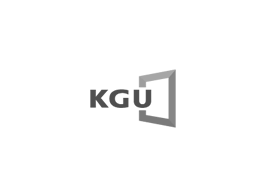 Freedom Given to Youth: An Opportunity for Choice or a Burden of Constraint?
“Are we truly free today?” Classical literature is far more than time-honored stories. It offers profound insights into human nature and society that transcend time, remaining a valuable resource for examining the challenges our world faces today. This article will draw on George Orwell’s 1984 and Charles Dickens’ Oliver Twist to explore the contemporary issues of youth housing and the emergence of a surveillance society ...
Freedom Given to Youth: An Opportunity for Choice or a Burden of Constraint?
“Are we truly free today?” Classical literature is far more than time-honored stories. It offers profound insights into human nature and society that transcend time, remaining a valuable resource for examining the challenges our world faces today. This article will draw on George Orwell’s 1984 and Charles Dickens’ Oliver Twist to explore the contemporary issues of youth housing and the emergence of a surveillance society ...

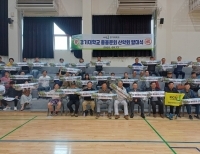 [단신] 산악회, 본교 동문의 버팀목이 될 수 있도록
[단신] 산악회, 본교 동문의 버팀목이 될 수 있도록
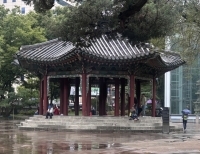 [사회메인] 노인 인구 1,000만 시대, 준비 없는 사회가 불안해
[사회메인] 노인 인구 1,000만 시대, 준비 없는 사회가 불안해
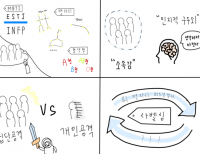 [네컷만화] 라벨링 문화
[네컷만화] 라벨링 문화
 [진리터] 결국 우리 모두 돌아볼 것이니
[진리터] 결국 우리 모두 돌아볼 것이니

 목록
목록





